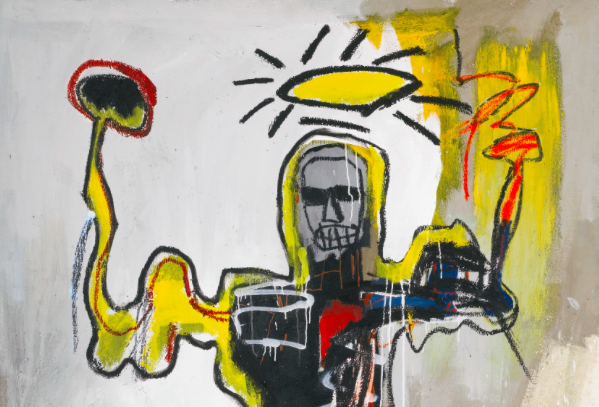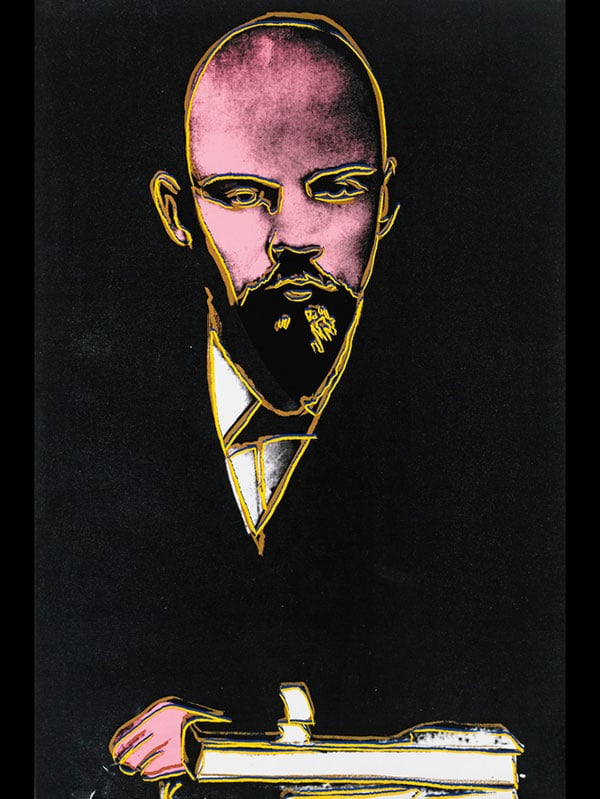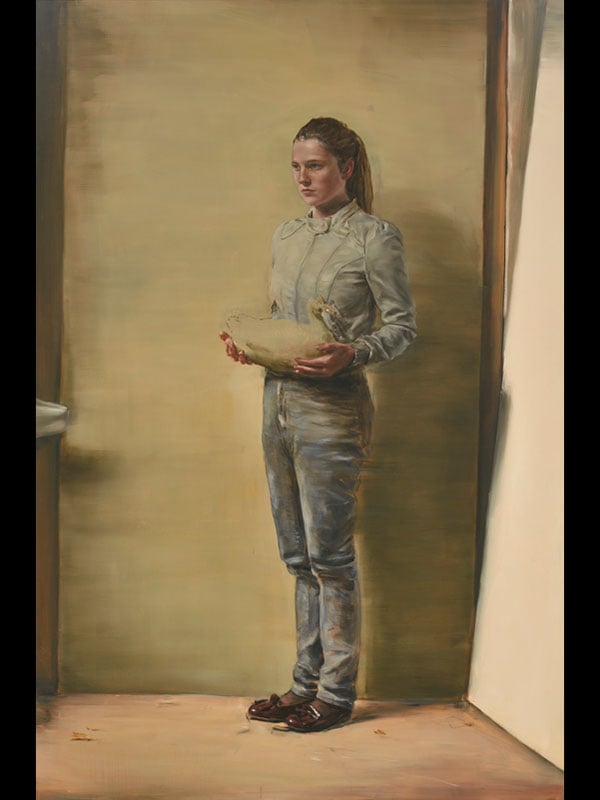Auctions
Basquiat Leads Sotheby’s $56.3 Million Sale—Its Second Highest During Frieze Week
The Basquiat sold to a phone bidder for a slightly disappointing £4.1 million.

Image: Courtesy of Sotheby's
The Basquiat sold to a phone bidder for a slightly disappointing £4.1 million.

Colin Gleadell

Sotheby’s went into tonight’s contemporary sale with a £32.9 million ($50.9 million) to £46.2 million ($71.5 million) estimate, its highest for a Frieze week sale, and came out with a respectable £36.4 million ($56.3 million) total (sales figures include buyer’s premium, estimates do not). The only Frieze week total that made more at Sotheby’s was in 2012 when they included a Gerhard Richter abstract that made a record £21.3 million. Generally, though, Frieze week sales carry little high end contemporary material, so their real interest is in neglected historical figures and trending new artists—which is a mirror reflection of the Frieze and Frieze Masters fairs.
The top lot was Jean Michel Basquiat’s six-foot canvas Untitled (The Black Athlete) (1982), which was unsold the last time it came to auction in 2004 with a $1.2 to $1.8 million estimate. A while later, around 2009, it appeared at Christophe van de Weghe’s New York gallery and was reportedly sold to London jeweller Laurence Graff with an asking price of 3.5 million Euros.
Now, with a £3.5 to 4.5 million estimate and catalogued as from ‘a distinguished private collection’ (acquired from Van de Weghe), it sold to a phone bidder for a slightly disappointing £4.1 million. Also from the same collection, presumably Graff’s, came an Andy Warhol portrait of Lenin, bought at auction in 2002 for £358,650, which now reaped a handsome return selling within estimate for £3 million. Other works from the same collection were a 1967 set of Warhol’s Marilyn Monroe editioned screenprints, bought in 2004 for £430,850 and now sold for £1.5 million, and a Warhol portrait of Judy Garland, bought in 2002 for £443,250 but unsold with a £750,000 low estimate.

Andy Warhol, Lenin.
Image: Courtesy of Sotheby’s
Other collections with works on the block were Stuttgart’s Froehlich Collection, with an Ed Ruscha gunpowder drawing that sold to dealer Paolo Vedovi within estimate for £197,000, and the shoe designer, Ernesto Esposito, whose colorful Anselm Kiefer, Die Ungerborenen (2013), more than doubled estimates to sell to US dealer, Stefan Simchowitz for £1.1 million. Simchowitz seemed to have been very focused on color as he went on to buy a resonant Sean Scully abstract, Enter Yellow (1999), above estimate for £557,000.
Another British artist to perform well was Frank Auerbach who is currently the subject of an impressive retrospective at Tate Britain and is reckoned to have inherited the title, “Britain’s greatest living painter,” from Lucian Freud. His early, thickly encrusted 1963 painting, E.O.W. on her Blue Eiderdown 1V sold for a double estimate £1.3 million to London dealer, Offer Waterman.
There were four notable record prices. A 1990 sculpture by Isa Genzken (who is also Richter’s former wife), was pursued by seven or eight bidders, including British collector, Fatima Maleki, before selling for a quadruple estimate £677,000. An eight-foot painted lead panel by Gunther Forg doubled estimates to fetch £509,000. Sotheby’s experts said a similar work had been at Art Basel in the summer for a comparable amount. A sizable 10-foot portrait, Girl with Duck, by Michael Borremans, also set a record when it sold for a double estimate £2 million. The fourth record was a bit of a cheat as it was the first painting by Latvian-born, US-based artist, Ella Kruglyanskaya, to come to auction. Currently enjoying a very successful exhibition at Thomas Dane’s gallery, and tipped to go far, Kruglyanskaya’s 2011 painting, Swordfish Panic, sold above estimate for £81,250.

Michael Borremans, Girl With Duck.
Image: Courtesy of Sotheby’s
It was noticeable that the majority of the unsold lots were works that had been on the market in the last ten years or so, and were now looking for big mark-ups. Mark Grotjahn’s Face, 2007, for instance, was bought in 2011 for £217,250 and was looking for at least £1.3 million and didn’t sell.
Christopher Wool’s spotted, untitled 1988 canvas that Gunther Forg had bought in 2011 for $842,500, was not unnecessarily marked up at £500,000/700,000, but more likely the victim of too many Wools on the market this week when it too went unsold.
By the end of the sale, there was a mixture of impressions. The good, rare things did well, but half of the lots sold either on or below their low estimates, or not at all.
Sotheby’s Italian art sale, which saw a record £15.9 million for a painting by Lucio Fontana, will be reviewed together with Christie’s Italian sale at the end of the week.
For more on Frieze Week, see Bizarre Booths at Frieze Masters Are All About Brand-Building for Dealers, What Sold on Day One at Frieze London, 15 Artists to Watch at Frieze London 2015, Helly Nahmad Stages a Mental Asylum with Jean Dubuffet Art Brut Works at Frieze Masters, Insider’s Guide to the Best and Worst of London’s Frieze Week 2015 and be sure to make use of artnet News’ 5 Tips for Every Art Fairgoer. Also, see photos from Ken Kagami’s saucy fair intervention, as well as the top booths at Frieze Masters.